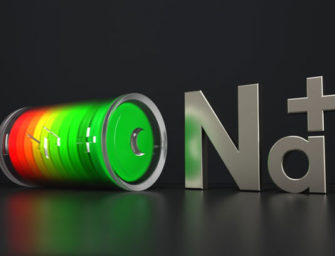Boom Supersonic – the Next Concorde or a Project going nowhere?
Boom Supersonic, a Colorado-based startup focused on resurrecting commercial supersonic air travel is trying to make flying faster, greener, and more affordable. Despite not having a finished plane, they already have orders from multiple airlines.
The aviation industry has no shortage of startups trying to make flying faster, greener, or more affordable. But rarely does a company come along promising to do all three, and it is even rarer when the company already has confirmed orders. Boom Supersonic, a Colorado-based startup focused on resurrecting commercial supersonic air travel, has never built an aircraft before, and is already five years behind schedule with its experimental test aircraft. Despite this, and the lack of an engine supplier, the company has signed orders with major players like American Airlines, Virgin Atlantic, and United Airlines.
Resurrecting Concorde’s speed across the globe
The goal of Boom Supersonic is quite simple: revive supersonic passenger air travel. As Blake Scholl, the founder and chief executive of Boom, says, “I started this because I was sad that I never got to fly on Concorde. I waited but no one was doing it, so I decided to.”
The company plans to build the Overture jet, a completely new design which promises speeds of up to Mach 1.7 over water, twice as fast as modern commercial aircraft, but just shy of the Concorde’s top cruising speed. The aircraft would have a range of 4,250 nautical miles and be able to make the London-New York Trip in as little as 3.5 hours, compared to over 6 hours currently. The plane, which now features a conventional tail instead of a delta-wing, certainly looks the part of a futuristic airliner. It is hoped that the first production model will roll off the line in 2025, with test flights and certification meaning that the first passenger flights would begin in 2029.
Supersonic flight makes zero carbon a lofty target
But reaching supersonic speeds requires an aircraft to burn more fuel – one of several reasons why Concorde was ultimately retired – and Boom is planning to achieve net zero C02 by 2025, and completely net zero greenhouse gas emissions by 2040, a goal seemingly at odds with faster-than-sound passenger travel.
Boom has dodged questions about this by stating that they prioritize “circularity by repurposing used tooling, recycling components on the shop floor, and leveraging additive manufacturing techniques that result in less manufacturing waste and lighter, more fuel-efficient products.” Scholl has echoed this view, saying, “ultimately I want people to be able to get anywhere in the world in five hours for $100. To get there you have to improve fuel efficiency.”
As well as fuel-efficient designs, the aircraft will run on up to 100% sustainable aviation fuel, although few specifics on how this will be done have been shared at this point.
Setbacks mount as Rolls Royce exits the project
Boom Supersonic and the Overture jet still have a long way to go before reaching the market, and further complicating matters is Rolls Royce’s recent statement saying they had completed their engine studies with Boom and would not be pursuing supersonic flight in their priorities.
Building a plane is difficult, even for established players. Airbus launched the A380 program in 2000, with the first test flight in 2005. The project faced two years of delays and an almost doubling of development costs. This means that for a newcomer like Boom that lacks the near-unlimited resources of a company like Airbus, achieving their time frame of test flights by 2025 would be almost unheard of, especially considering their three-engine, single-seat prototype known as the XB-1 has yet to take to the air. The time-frame is especially volatile now that they need a new engine supplier.
Even without a complete plane, Airlines are placing orders
Boom’s handful of employees might be their saving grace however, and they include ex-NASA, Boeing, and Lockheed engineers with experience developing over 30 aircraft including the well-known Boeing 787 Dreamliner, and Virgin Galactic’s Spaceship Two. This is perhaps why the company already has confirmed orders for the Overture from major players. American Airlines agreed in August 2022 to buy 20 of the Overture jets, with the option to purchase 40 more. Boom also has 15 jets on order to United Airlines, and 10 on order with Virgin Atlantic, along with 15 more to an unnamed European Airline. While the exact numbers of dollars being exchanged in these deals is not made public, American Airlines did confirm that the deposit on the aircraft was non-refundable, indicating a high level of confidence in the company’s future success.
Boom isn’t the first company to try and bring back supersonic commercial flight. Time will tell if their idea takes off, or if Boom Supersonic and the Overture jet remain firmly on the ground.
Photos : slate.fr
















There are no comments
Add yours